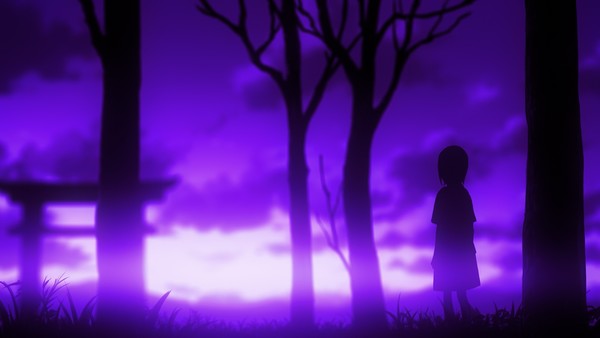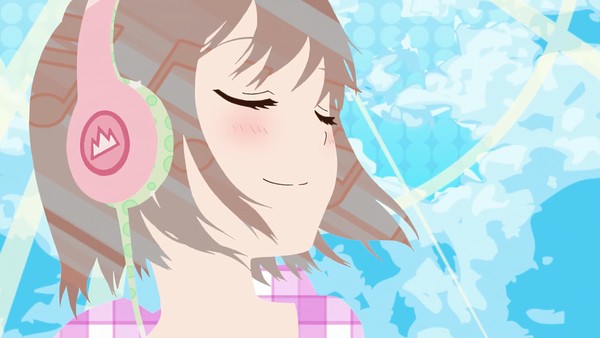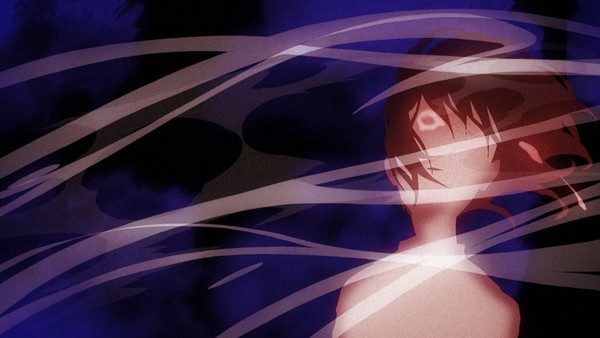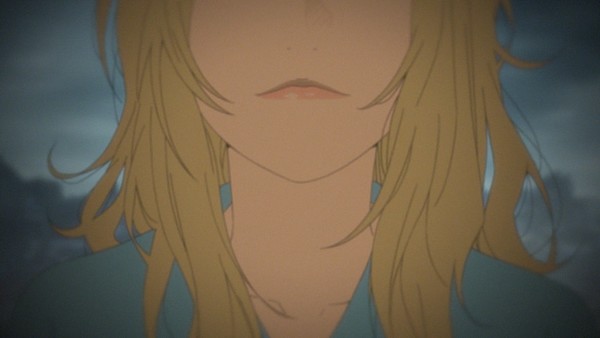The Rise of Masashi Ishihama: From The New World to Garakowa
by Kevin Cirugeda,It was well over two years ago when the existence of Garakowa – Save the World was first hinted at (under the name D.backup then), as the scenario that won Pony Canyon's creative contest awarded with an anime production. These news became a whole lot more exciting when it was revealed that Masashi Ishihama would be directing its movie adaptation, as his first full project since 2012's From the New World. Now that the film has finally debuted, and considering it will be streamed internationally on Crunchyroll almost immediately, it's worth looking into the creator that makes this an interesting upcoming project.

Masashi Ishihama's animation career took off in the 90s, in a rather normal fashion; a skilled youngster with a knack for character motion, whose drawings had a solid form but wasn't afraid to get loose when the action required it. This caught the eye of rather well known creators, and he quickly became a usual collaborator of people like Yasuomi Umetsu, Masami Ōbari, Koji Masunari and even Akiyuki Shinbo. On top of drawing both quiet character scenes and action, his affinity to drawing beautiful women lead Ishihama to have fanservice duties quite often; from animating titillating scenes to drawing all sorts of raunchy promotional illustrations, even getting to design swimsuits for mandatory beach episodes. Considering the inclinations of many of his mentors, even this amusing part of his career was fated to happen!
The following steps were natural as well. It was also thanks to those acquaintances that Ishihama started moving up the production ladder and getting to design the characters for series like Tenamonya Voyagers and READ OR DIE. Nothing extraordinary up to this point, but here is when things started to become genuinely interesting – rather than handling episodes, Ishihama had his directional breakthrough producing opening and ending sequences. He quickly proved he had a fascinating artistic voice, a unique style with many recurring patterns; his best known trait is his fondness of flat shading, combined with colored or otherwise entirely missing lineart. He uses that kind stylization to different degrees, from unshaded shots of characters to featureless silhouettes. He has a similar approach when it comes to background and non-human elements, so his sequences are often composed of superimposed flat shapes. He's also keen of fancy presentation of text, be it by fully and subtly integrating the staff credits into the scenes or making them very apparent, artistically weaponized and blended with the overall aesthetic. Even his filmic tendencies tend to come through, as he often distorts his lenses, shakes the camera and applies digital grain to scenes.
And of course, when it comes to it these techniques aren't isolated, Ishihama combines them as much as possible while still ending up with a cohesive sequence. Multiple layers of flat shapes, silhouettes, ornate text and post-processing all tend to coexist within his work. It's a repertoire wide enough to make his output identifiable, yet always fresh and exciting to watch. It's easy to see how he was influenced by his mentors and friends: even nowadays integrated credits also are a staple of Umetsu's openings, and his fondness of red and black contrasts could be traced back to Obari and Shinbo's more idiosyncratic early works. Ishihama's spin on those techniques plus his own tricks earned him well deserved recognition, and he's now widely considered one of the industry masters when it comes to crafting opening sequences.

What's even more interesting however is how he immediately knew how to apply all these techniques in a much more ambitious project, once he got to direct the anime adaptation of From the New World in 2012. The scope of a 2 cours dystopian Sci-Fi series dealing with heavy themes can't even be compared to the short and self-contained sequences he excelled at, yet we got to see all his previous mannerisms come back in a major way; this isn't limited to cute quirks like his characteristic integrated credits having become episode titles fused into the footage, or even the highly atmospheric backlit silhouettes that looked straight out of his openings. Ishihama endeavored, both by his own hand and through other unique creators, to use his tricks to enhance many key narrative moments in the series. Perhaps the first instance of that to stand out, since it's already present in the very first scene of the show, is how he actively tried to make all scenes set in different locations and points in time than the main story feel immediately distinct; flashbacks to the lost civilization were heavily filtered to mimic film deterioration, and legends from the past were given distorted palettes on top of that. There's also more subtle techniques, like his constant racking focus; Ishihama keeps readjusting the fake lens he shoots anime with, making these scenes more unsettling. Overall it might not seem something huge, but it's an effective way to deliver the piecemeal lost knowledge of a long gone civilization. This thoroughness sets the tone for what's to come.
On a similar note, supernatural fables also got a special visual treatment, one that very much fit Ishihama's personal aesthetic: flat shading and silhouettes portraying the horrors that humans are meant to be wary of. An interesting usage of extremely stylized digital animation, all handled by the webgen figurehead Shingo Yamashita. Abstraction and effects tend to be the forte of the animation movement he represents, which really fits the scenes he was tasked with. It's noteworthy that this style was also used for the ending sequence that plays as the only intermission during most of the series, since it never got an opening.
Action is scarce in From the New World, so it's understandable that Ishihama would try to give its limited spotlight a unique flair as well. With that mindset he chose Jun Arai (popularly known as Arasan), whose angular drawings and wild timing always manage to stand out. The intro to episode #3 was a good showcase of how his style can be very compatible with Ishihama's approach – the latter's silhouettes and shadows are the basis of a cartoony yet cool scene. Arasan's animation has been sometimes criticized as a perversion of the Kanada Style, since the timing of his sequences is so brusque that it can be arguable whether it still counts as animation or not, but the execution here is outstanding. He returned multiple times in the last arc of the series to handle similar scenes, chaotic moments featuring alien creatures and fearsome psychic powers. Once again, Ishihama's aim to pair exceptional points in the narrative with creators and styles that feel special is obvious.

It would be beyond unfair not to mention Shigeyasu Yamauchi's name when talking about the idiosyncratic styles that From the New World benefited from. Fans of his magnum opus Casshern Sins likely already know that he excels at portraying desolate worlds, something Ishihama fully understood as well. That is why he was trusted with two special episodes sharing a common idea: the protagonist Saki being separated from the group and isolated with someone else, surrounded by a threatening environment. In the first case, episode #5, she finds herself captured by the queerat creatures with only one of her companions. The previous reveal that they belong to a hypersexualized society (engineered so that esper youngsters release their stress and don't become potential dangers) leads to many intimate and charged sequences through the episode, delivered through Yamauchi's usual close-up framing. Episode #10 on the other hand was one of the series’ emotional peaks, a beautiful yet bleak moment – Saki ventures into a warped world, the result of one of her dear friend's powers running amok. From the New World is upfront about its nature as a post-apocalyptic dystopia, but that is the first time we get a first-hand look at the kind of disaster that prompted the end of a civilization. The subconscious leakage of those powers can be enough to corrupt life itself, yet Yamauchi manages to find the beauty that lurks in such dreary scenes.
Despite their styles sharing similitudes like the moody lighting, it's undeniable that those episodes visually stood out from the show's norm; as it tends to happen when a TV series suddenly adopts a different look, the reception – especially of #5 – was rather mixed. The thematic intent is clear, but Yamauchi's approach to animation is always polarizing so it's no surprise this didn't sit well with everyone.
As an artist with a great command of character acting, it's no surprise that Ishihama would rely on someone who equally excelled at this kind motion as the main animator for his series. The chosen one was Takashi Kojima, whose lively cuts carried the show from the very beginning. Perhaps his highest accomplishment was the extensive work he did for episode 19, one of the most genuine and effective portrayals of horror in anime. At this point the humans feel more vulnerable than ever, as they're cornered by a mysterious foe they know they must escape from. For individuals who have grown under the belief that their esper powers make them invincible, facing and even more almighty creature they can't even attack is incredibly distressing. The ones who can even bring themselves to move are constantly panicking, even in simple conversations you can feel their anguish. Characters move erratically and swing their arms wildly, there's many emotional outbursts, and you're given glimpses of the terror chasing them. The framing inside the building is claustrophobic and makes the viewer wish they could escape too. It's really easy for horror to accidentally cross into unintentional comedy, but the portrayal of their primal fear in this episode always stays believable. This level of nuanced craft is far beyond what regular TV anime is supposed to offer, and such a masterful episode proved the Ishihama/Kojima partnership can accomplish whatever they want. Seeing them produce one of the most impressive episodes of Your Lie in April just by themselves was no surprise, honestly.

When people talk about anime's most fascinating creators, our industry's auteurs, they generally refer to artists with quite a lot of professional work who have been refining their styles throughout the years. Masashi Ishihama belongs to an even more select group of gifted individuals, the kind who attain an incredible grasp of animation as a medium before handling their own productions, and then immediately understand how to apply that knowledge when leading a project. This isn't to say he has no room for growth – From the New World was bold and confident but rough around the edges, the very definition of a flawed masterpiece. It did prove however that his potential as a director is incredible, a tremendous accomplishment for his debut. It's doubtful whether Garakowa will be equally compelling, since chances are that going from a very well regarded SciFi novel to a scenario draft that won an anime contest will be a downgrade to some extent. What's for sure though, is that any work in the hands of Ishihama is immediately worth paying attention to.
discuss this in the forum (25 posts) |
this article has been modified since it was originally posted; see change history